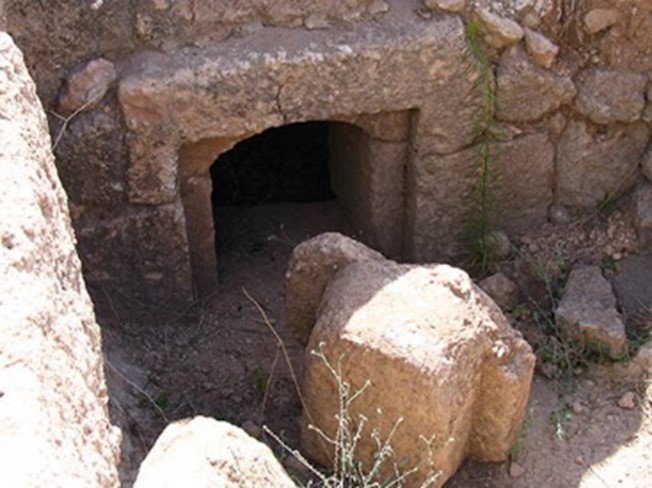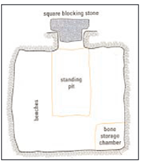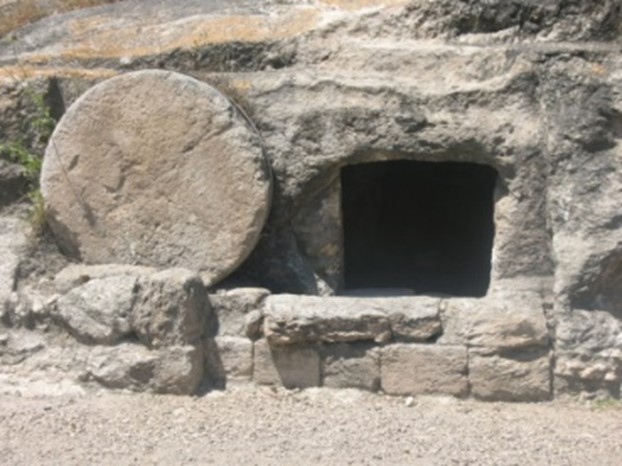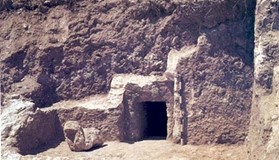Although God had ordained centuries before that the Messiah would be with a rich man in His death (Isa 53:9), there was much for the particular rich man whom He had set apart, Joseph of Arimathea, to overcome in order that it might come to pass. Jesus had been assigned a grave with the wicked by those who had Him put to death, perhaps in the valley of Hinnom where the refuse of the city and the carcasses of dead animals were disposed of (cf. Jer 22:19), or perhaps even by burning to cast the ultimate stigma upon Him as an evildoer who, like Achan, had troubled Israel so as to squash the movement His ministry was generating. The prospect of such an ignoble end to His noble life was perhaps what spurred Joseph to act, whose action also seems to have spurred Nicodemus to join him; cf. Heb 10:24. Their actions came at great personal cost and expense, even though Jesus was already dead and they had nothing to gain but the bitter hatred of their colleagues on the Sanhedrin. How might most Christians today in the same circumstances have acted differently because of their different understanding of the sacredness of a person’s body even after death? And yet, how important did the empty tomb prove to be in establishing Christ’s resurrection? How many of those same people today might never have become Christians if not for the empty tomb by dismissing His resurrection appearances as mere hallucinations or wishful thinking? Is it possible then that there is something more to our own proper burial that we may not see now or understand, but that is our last witness to the truth that we leave behind at our death, as did Abraham, Isaac, Jacob, Joseph, David, and the long list of righteous saints up to and including Jesus? See Gen 50:25, Exo 13:19, Jos 24:32, Act 7:16, Heb 11:22; cf. Act 2:29.
What three facts does Matthew give to describe the tomb where Jesus’ body was laid? See Mat 27:60; cf. also Joh 20:5 and note that tomb entrances were built low to the ground to facilitate sealing them with a stone, but stepped down into a “pit” where one could stand, with benches on the three sides to lay the body. A chamber or ossuary was also often found in such tombs to store the bones of bodies that had already decayed so that the tomb could be used again and again. How does Luke explain what Matthew meant by a “new” tomb? See Luk 23:53. In light of the Jewish penchant for ritual purity, what thoughts might Joseph have had about the tomb, which he had at great expense dug out of solid rock for himself and in which no one had ever lain, being used for someone else’s dead body? Cf. Num 19:16, Mat 23:27, Luk 11:44. In what way was the internal struggle Joseph had to overcome from such thoughts, as well as the external fears he had from opposing his colleagues on the Sanhedrin to personally approach Pilate for Jesus’ body, similar to the internal struggles and external fears each of us face in seeking to faithfully serve the Lord by doing what is right, even when it appears that there is nothing to be gained by doing so? What does his example remind us about there always being something to be gained, perhaps even spectacularly, from doing what is right, even though we may not always see or understand it at the time? Are we as faithful to overcome such struggles and fears, and do we understand that all of God’s promises for which we hope are only to those who overcome? Cf. 1Jo 5:4,5, Rev 2:7,11,17,26, 3:5,12,21, 21:7.
What does John add to the description of Jesus’ tomb that describes where it was located? See Joh 19:41. Are we to understand John to mean that the tomb was necessarily right there at the very same place where Jesus was crucified, just a few yards from the place of crucifixion as in the Church of the Holy Sepulcher? See Joh 19:42 and note that although the tomb was nearby, place in Joh 19:41 refers to a general location, such as a region or locality, which allows for the tomb to still have been some distance away, which seems to be the case; cf. Joh 4:20, 10:40. It also seems unlikely that Golgotha would have been located in the garden (which might better be translated as an orchard) where the tomb was located, or that Joseph would have located his tomb in close proximity to the place of Roman execution. Thus Joseph and Nicodemus would have had to carry the body some distance from the cross to the sepulcher. See also Luk 23:55, noting that the women “followed after” to see the tomb where He was laid; if the tomb was very close, they would not have had to follow after them to see it.
How does Matthew say that Joseph sealed the tomb after laying Jesus’ body in it? See Mat 27:60. Are we to understand that this stone that was rolled in front of the tomb to seal it was necessarily a large disk as is understood from the images commonly used to portray it? Note: while stone disks became more common in later centuries, of over 900 known tombs from the time of Jesus, only four have sealing stones of the disk type, all of which belonged to royal or very wealthy people. The vast majority were sealed by more of a “cork” type stone that typically would still have needed to be “rolled” into place by several men due to its large size and weight. See Gen 29:3 where the same Greek word is used in the LXX for how a stone was “rolled” on and off of the mouth of a well to seal or unseal it. See also Joh 20:1 where the stone is described as having been “taken away”, and Mat 28:2 where the angel rolling away the stone and sitting upon it would seem to indicate more of a square, cork-type plug to the tomb than a round disk.



